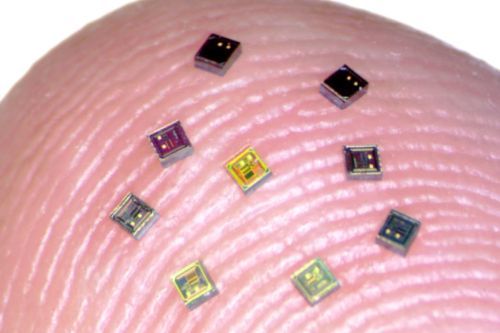On the pages of our website, we often talked about various variants of neurocomputer interfaces (brain-computer interface, BCI), which act as a link between a computer and the human brain. Such interfaces are already being used to restore lost functions in people with disabilities, to implement technologies for so-called " thought control" of various devices, etc.And in the future, such interfaces may become even more effective thanks to the development of new tiny sensors-implants.
The maximum efficiency of the neurocomputer interface is achieved when special electrodes are inserted directly into the brain or other parts of the nervous system. Each of these electrodes is able to stimulate or control the electrical activity of several hundred neurons located in close proximity. But the human brain contains about 86 billion neurons, and to increase the quality of the neurocomputer interface, it requires the input of many electrodes, usually formed in the form of special matrices.
A few years ago, a group of scientists from Brown University, the University of Texas, the University of California at San Diego and Qualcomm began developing an alternative solution that allows for greater efficiency and greater resolution of the BCI interface. The solution developed by them is called neurogranules, which are microscopic sensors-implants, the size of each of which does not exceed the size of a grain of salt.
After the introduction of neurogranules, they connect to each other using wireless technologies and form a single network. Data exchange with the outside world and the supply of energy to this network is carried out using a thin-film device, the size of a thumbprint, capable of receiving signals and transmitting signals to certain neurogranules that perform electrical stimulation of nearby neurons.
As an experiment, the scientists inserted 48 neurogranules into the surface of the cerebral cortex of an experimental rodent. After that, the scientists recorded characteristic neural signals associated with a certain type of brain activity, and reproduced the same activity by "scrolling" the recordings made .
At the current level of implementation, this technology allows you to create networks of 770 neurogranules. But further improvement of this technology will allow the introduction of thousands and tens of thousands of sensors into the brain, which will allow us to obtain a degree of control of neural activity and stimulation of neurons that is unattainable today.

